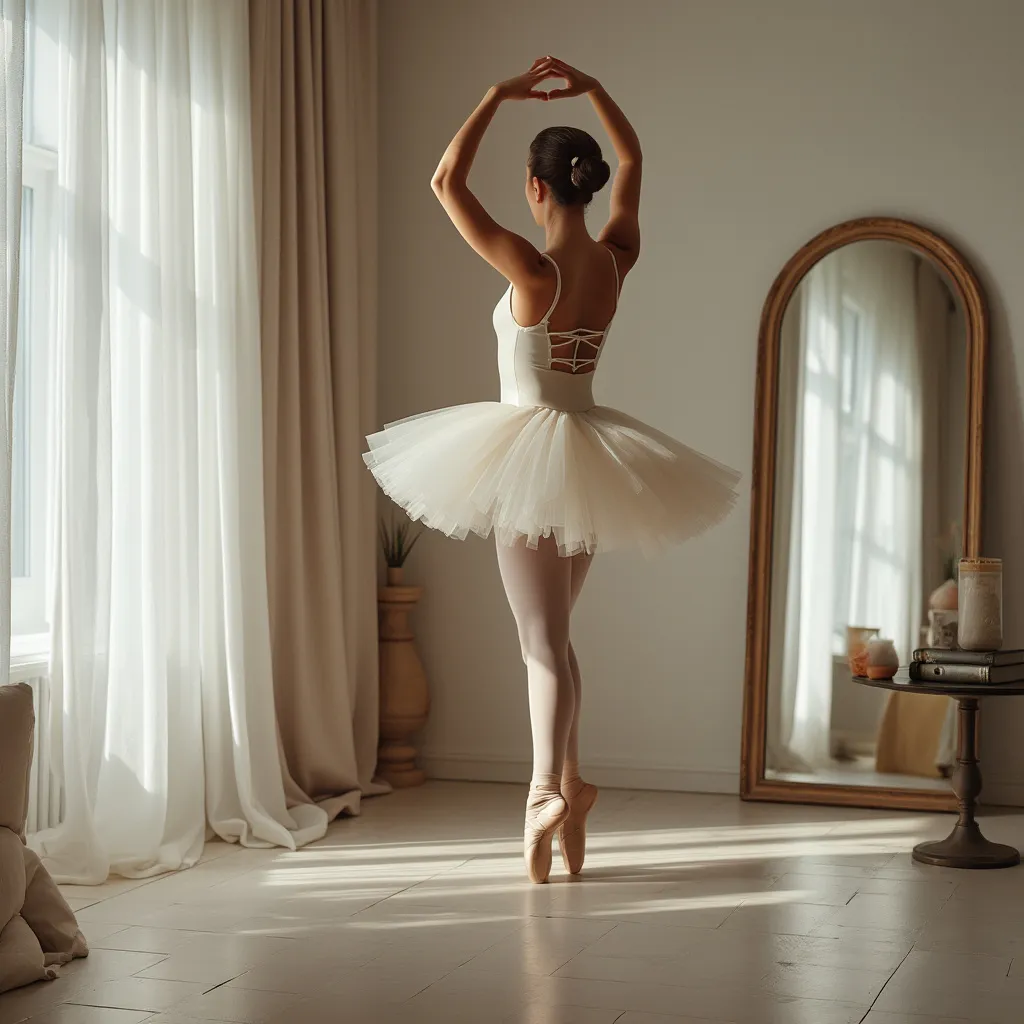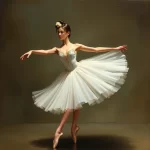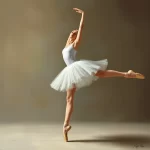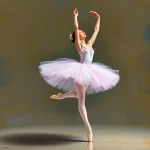How to Transition from Corps de Ballet to Principal Dancer
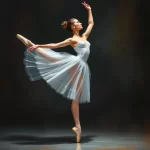
Introduction
The journey from being a member of the corps de ballet to becoming a principal dancer is a dream for many ballet dancers. This transition is not only a testament to a dancer’s technical prowess but also to their dedication, artistry, and resilience. While the path is challenging, it is also incredibly rewarding. This article aims to provide a comprehensive guide on how to make this significant career leap, offering insights into the necessary skills, mindset, and strategies to achieve this goal.
Understanding the Roles
What is the Corps de Ballet?
The corps de ballet is the backbone of any ballet company. These dancers perform as a group, often in unison, to create the visual and artistic backdrop for the principal dancers. While the roles may not always be as glamorous, they are crucial for the overall production. Members of the corps de ballet must possess strong technical skills, the ability to blend seamlessly with others, and a high level of endurance.
What is a Principal Dancer?
A principal dancer is the star of the ballet company. These dancers take on leading roles and are often the focal point of performances. Becoming a principal dancer requires exceptional technical ability, artistic expression, and the capacity to captivate an audience. Principals often have more creative freedom and are given opportunities to work with renowned choreographers and directors.
Skills and Qualities Needed
Technical Proficiency
To transition from the corps de ballet to a principal dancer, technical proficiency is non-negotiable. This includes mastering advanced techniques, maintaining impeccable form, and demonstrating versatility across various styles of ballet. Regular practice, private coaching, and attending workshops can help in honing these skills.
Artistic Expression
While technical skills are essential, artistic expression sets principal dancers apart. This involves conveying emotions, telling a story through movement, and connecting with the audience on a deeper level. Dancers should focus on developing their unique style and interpretation of roles.
Physical and Mental Endurance
The journey to becoming a principal dancer is physically and mentally demanding. Dancers must maintain peak physical condition through rigorous training, proper nutrition, and adequate rest. Mental resilience is equally important to handle the pressures and setbacks that come with the territory.
Professionalism and Work Ethic
Professionalism and a strong work ethic are crucial for career advancement. This includes punctuality, a positive attitude, and the ability to work well with others. Building good relationships with peers, instructors, and directors can open doors to new opportunities.
Steps to Transition
Set Clear Goals
Setting clear, achievable goals is the first step in transitioning from the corps de ballet to a principal dancer. These goals should be specific, measurable, and time-bound. For example, aim to master a particular technique within six months or audition for a solo role within a year.
Seek Mentorship
Having a mentor can provide invaluable guidance and support. Look for experienced dancers or instructors who can offer constructive feedback, career advice, and emotional support. Mentors can also help in networking and opening doors to new opportunities.
Take on Challenging Roles
Volunteering for challenging roles, even within the corps de ballet, can showcase your abilities and dedication. These roles often require more responsibility and can serve as a stepping stone to more prominent positions.
Attend Auditions and Workshops
Auditions and workshops are excellent opportunities to gain exposure and experience. They allow you to showcase your skills to a broader audience and receive feedback from different instructors and choreographers. Attend as many as possible to increase your chances of being noticed.
Network and Build Relationships
Networking is crucial in the ballet world. Building relationships with peers, instructors, and industry professionals can lead to new opportunities and collaborations. Attend industry events, engage on social media, and be active in the ballet community.
Focus on Continuous Improvement
The journey to becoming a principal dancer is ongoing. Focus on continuous improvement by regularly assessing your skills, seeking feedback, and setting new goals. Stay updated with industry trends and be open to learning new techniques and styles.
Common Challenges and How to Overcome Them
Injury and Physical Strain
Injuries are a common challenge for dancers. To minimize the risk, prioritize proper warm-ups, cool-downs, and strength training. Listen to your body and seek medical advice when needed. Incorporate cross-training activities like swimming or yoga to maintain overall fitness without overstraining specific muscles.
Mental Stress and Burnout
The pressure to perform and constant competition can lead to mental stress and burnout. Practice mindfulness techniques such as meditation and deep breathing exercises. Ensure you have a support system in place, including friends, family, and mental health professionals.
Balancing Personal and Professional Life
Balancing a demanding career with personal life can be challenging. Time management skills are crucial. Set aside time for relaxation and hobbies outside of ballet. Maintaining a healthy work-life balance can improve overall well-being and performance.
Success Stories
Misty Copeland
Misty Copeland’s journey from the corps de ballet to becoming the first African American female principal dancer at the American Ballet Theatre is an inspiring story. Her dedication, resilience, and unique artistic expression set her apart and paved the way for her success.
Sergei Polunin
Sergei Polunin’s rise to fame is another remarkable story. Known for his exceptional technical skills and charismatic stage presence, Polunin quickly transitioned from the corps de ballet to principal dancer, becoming one of the youngest ever to achieve this status at the Royal Ballet.
FAQ
How long does it typically take to become a principal dancer?
The time it takes to become a principal dancer varies widely depending on individual circumstances, including talent, opportunities, and the specific ballet company. On average, it can take anywhere from 5 to 15 years of dedicated training and performance.
Do I need a specific body type to become a principal dancer?
While traditional ballet has often favored certain body types, the industry is gradually becoming more inclusive. What matters most is your technical ability, artistic expression, and dedication. Focus on maintaining a healthy and strong body rather than fitting a specific mold.
Is it necessary to have a mentor?
While not absolutely necessary, having a mentor can significantly benefit your career. Mentors provide guidance, support, and valuable industry insights that can help you navigate your path more effectively.
Can I transition to a principal dancer if I start ballet late?
Starting ballet at a later age can present additional challenges, but it is not impossible. With exceptional dedication, hard work, and the right opportunities, late starters can also achieve principal status. Focus on intensive training and seek opportunities to showcase your talent.
What should I do if I face rejection?
Rejection is a part of any artistic career. Use it as a learning experience and an opportunity to improve. Seek feedback, work on your weaknesses, and stay persistent. Remember that every dancer’s journey is unique, and setbacks are often stepping stones to success.
Conclusion
Transitioning from the corps de ballet to a principal dancer is a challenging yet achievable goal. It requires a combination of technical proficiency, artistic expression, physical and mental endurance, and a strong work ethic. By setting clear goals, seeking mentorship, taking on challenging roles, attending auditions and workshops, and focusing on continuous improvement, dancers can navigate this journey successfully. While the path may be fraught with challenges, the rewards of becoming a principal dancer make the effort worthwhile. Stay dedicated, resilient, and passionate, and you may find yourself taking center stage as a principal dancer.

